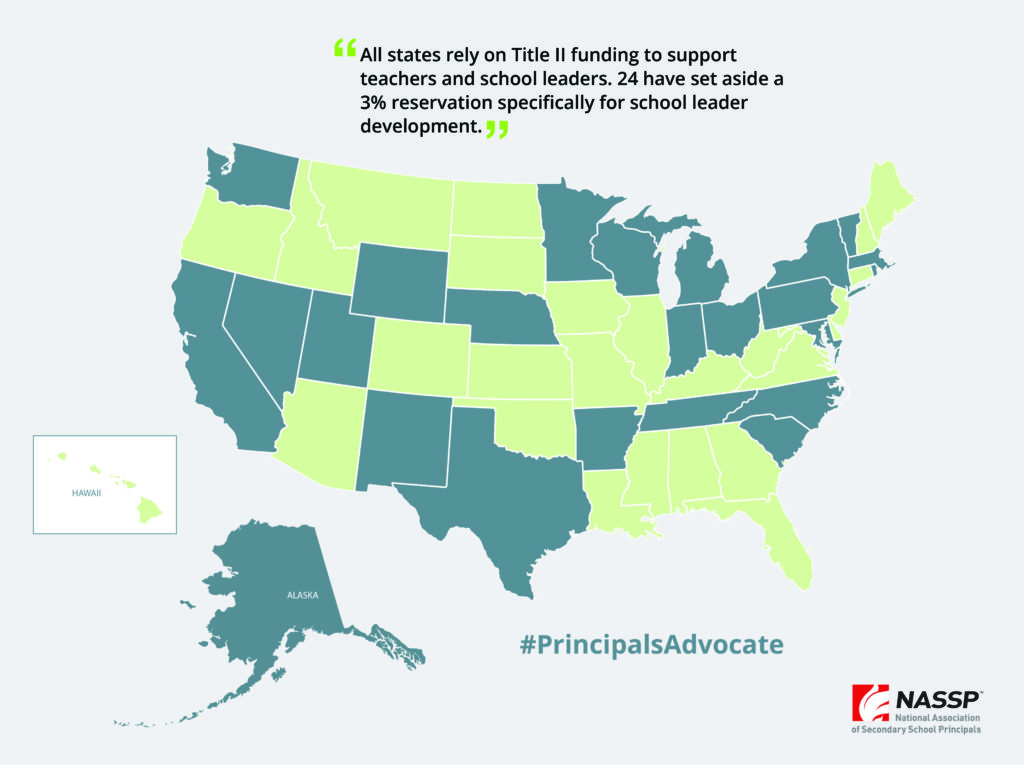In December 2021, NASSP released results from a nationally representative survey of principals that found job satisfaction is at an ultimate low with almost 4 out of 10 principals (38%) expecting to leave the profession in the next three years. The pandemic, political tensions, and limited guidance and resources were cited as major factors.
Throughout the pandemic, school leaders have shared stories about their ever-changing responsibilities to keep students and staff healthy, covering classes when there are no substitute teachers, and generally taking on other duties as assigned. Schools were already facing educator shortages before the pandemic, but the school leadership pipeline seems increasingly fractured.
So, what can be done to alleviate some of the pressure on school leaders and ensure all children have access to excellent educators?
First, Congress must complete work on the appropriations bill for this fiscal year and invest in Title II of the Every Student Succeeds Act (ESSA). NASSP was instrumental in securing language for the Act, which became law in 2015 and allows states to reserve 3 percent of their Title II funds for school leadership activities (see the map for which states took advantage of this). States and districts can use this funding for recruitment incentives, teacher and principal preparation programs, ongoing mentoring and support for school leaders, and evaluation systems that help principals improve their practice. More than 20 states took advantage of the set-aside in their comprehensive ESSA plans, and other states and districts use their Title II funds to invest in their education workforce.

NASSP leads a coalition of national organizations in continuing to advocate for Title II funding, and we were pleased that both the House and Senate Appropriations Committees approved increases for the program in their appropriations this fiscal year. Unfortunately, Congress has passed a series of continuing resolutions (CR) to keep federal programs operating at their current funding levels as it negotiates a final spending deal. The most recent CR expires on February 18, and we are in danger of Congress passing only a year-long CR instead of making longer-term investments in Title II and other education programs.
You can also urge them to pass the EDUCATORS for America Act, which Sen. Jack Reed (D-RI) and Rep. Alma Adams (D-NC) recently introduced. The bill would authorize $500 million for states to develop a strategy for meeting their educator workforce needs and ensure that the workforce is inclusive of educators of color, first-generation college students, and educators with disabilities. The bill would also expand the current Teacher Quality Partnership grant program to include school leader preparation programs and focus on residency programs that provide new educators with school-based learning opportunities.
As an incentive for more young people to enter the profession, the EDUCATORS for America Act would establish an education careers opportunity program to expose middle level and high school students to the education profession, increase TEACH grants for students in teacher preparation programs to $8,000 per year, and include the costs of clinical experiences in financial aid awards. The bill would also provide school leaders and teachers in high-need schools and fields with a credit for loan repayment as they work in schools rather than having to wait 5–10 years to earn loan forgiveness.

